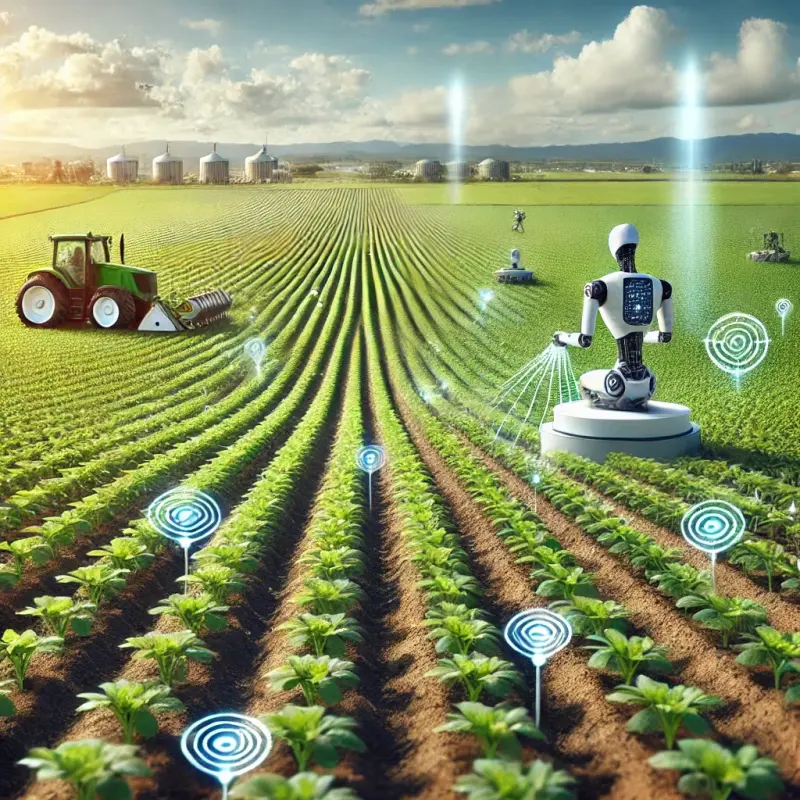The Evolution of Agriculture Through Artificial Intelligence
Agriculture has always been the backbone of human civilization, driving economies and sustaining populations. Over centuries, farming techniques evolved, from manual labor to mechanized operations during the industrial revolution. Today, the next phase of transformation is unfolding, driven by artificial intelligence (AI). Automated farm management, powered by AI, is reshaping agriculture, enhancing productivity, minimizing resource waste, and addressing global challenges like food security and climate change.
Understanding AI in Agriculture
Artificial intelligence in agriculture refers to the use of machine learning, computer vision, robotics, and data analytics to optimize farming processes. This integration is not limited to a single aspect; it spans across crop management, livestock monitoring, resource allocation, and predictive analytics. With AI, farms are becoming intelligent ecosystems capable of self-monitoring and adapting to changing conditions.
One of the key technologies driving this revolution is machine learning. Algorithms analyze vast amounts of data collected from sensors, satellites, and weather systems to provide actionable insights. For instance, AI-powered systems can detect subtle changes in soil composition or plant health, enabling farmers to take timely corrective measures.
Automated Farming Equipment: The New Age Workforce
Automation plays a critical role in implementing AI-driven strategies on farms. Robotic systems, equipped with AI capabilities, are now performing tasks traditionally handled by humans. These tasks include sowing seeds, watering crops, applying fertilizers, and even harvesting produce with precision.
- Seeding and Planting Robots: Advanced machines equipped with GPS technology and computer vision systems ensure that seeds are planted at optimal depths and spacing, enhancing yield potential.
- Harvesting Robots: AI-driven harvesting machines utilize computer vision to identify ripe fruits and vegetables. This ensures minimal wastage and maximizes quality.
- Irrigation Automation: Smart irrigation systems use AI to monitor soil moisture and weather conditions, determining the exact amount of water required, reducing consumption, and preserving this vital resource.
AI and Sustainability: A Perfect Match
Sustainability is a major goal in modern agriculture. AI's contribution to sustainable farming lies in its ability to optimize resources, minimize waste, and reduce the environmental footprint of agricultural practices.
- Precision Agriculture: By using satellite imagery and AI, farmers can apply fertilizers and pesticides only where needed, minimizing overuse and preventing harm to surrounding ecosystems.
- Carbon Footprint Reduction: Automated equipment powered by AI can operate with energy efficiency in mind, promoting the use of renewable energy sources such as solar-powered sensors.
- Water Conservation: AI's predictive analytics help prevent over-irrigation, ensuring that water is used judiciously without compromising crop health.
Predictive Analytics and Crop Health Monitoring
AI enables farmers to anticipate challenges before they arise. Predictive models, based on historical data and real-time observations, provide insights into potential pest outbreaks, disease prevalence, and weather patterns. For example:
- Pest Management: AI tools analyze weather data and pest activity, suggesting the best times for interventions to prevent infestations.
- Disease Detection: Computer vision systems identify early signs of disease in crops, allowing farmers to isolate and treat affected plants.
- Yield Prediction: AI systems estimate crop yields with remarkable accuracy, aiding in better market planning and reducing post-harvest losses.
